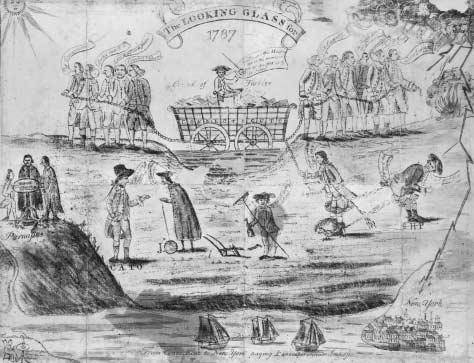
Those who did not support the Constitution came to be known as Anti-Federalists or ‘states-rights men’ and their most notable representative was Patrick Henry (who had refused to attend the Convention because of his suspicion of it, declaring “I smell a rat, tending toward monarchy”). Others included George Clinton, Richard Henry Lee and Mercy Otis Warren, the female chronicler. Thomas Jefferson was also sharply critical of the Constitution, though he actively supported some parts of it, and later explained that he was not fully Anti-Federalist but somewhere between the two positions.
“The basic concept stressed [in many anti-Federalist works] was the evil effect of power. ‘The love of power is natural… it is insatiable…’ wrote Burgh. ‘Power renders men wanton, insolent to others and fond of themselves,’ observed Gordon and Trenchard… This mistrust of power was characteristic of American political thought during this period.”
Jackson T. Main, historian
Unlike their opposition the Anti-Federalists did not engage in a co-ordinated and sustained propaganda barrage. While the Federalist Papers appeared as 85 single editions, published regularly and with clear arguments and tone, the Anti-Federalists wrote sporadically, using pseudonyms such as Cato, Federal Farmer, Centinel and Brutus. The quality of their pamphlets did not approach those of the Federalists. Intellectually outgunned and lacking a figurehead leader such as Washington, the Anti-Federalists were not able to convince enough of their cause, though they enjoyed plenty of support, particularly in the larger states and in the south. Some Americans saw the flaws in both sides and supported neither the federalist or anti-federalist points-of-view. The picture shown here, The Looking Glass for 1787: A House Divided against itself cannot Stand, shows the two camps pulling the state of Connecticut apart with their constant bickering and equivocation.
Copyright: The content on this page is © Alpha History 2019. It may not be republished without our express permission. For more information on usage, please refer to our Terms of Use.
